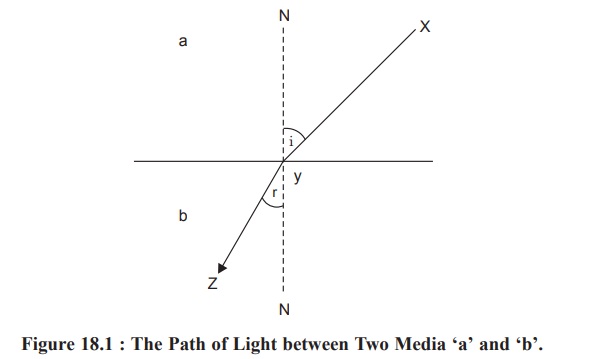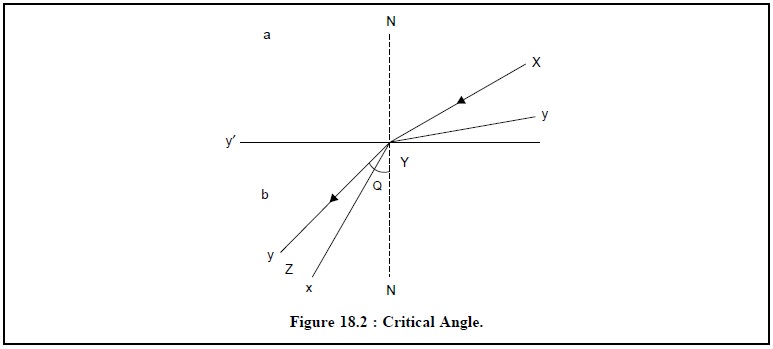Chapter: Pharmaceutical Drug Analysis: Refractometry
Refractometry

REFRACTOMETRY
INTRODUCTION
Light passes more rapidly
through a vacuum than through a substance (medium). It has been observed that
when a ray of light happens to pass from one medium (a) into another medium (b)
it is subjected to refraction (Figure 18.1). In other words, the ray travels at
a lower velocity in the relatively more optically dense medium (b) than in medium (a) which is less optically dense. It is a common practice to
compare the refractive indices of liquids to that of air.

According to Snell’s Law we
have :
 .....................(1)
.....................(1)
where, i = Angle of incidence,
r = Angle of refraction, and
n = Refractive index of medium (b) relative to medium (a)
Critical Angle vis-a-vis Refractive Index
Figure 18.2, represents the
critical angle which is used invariably in refractometry. Considering a narrow
band of rays, x-y, held near to the boundary between the two media ‘a’ and ‘b’ (Figure 18.2), and viewed at Z, one may observe a band of light.
This particular band has a sharp edge at y,
where the actual ray (y-y) may be seen. However, no rays are to
be seen in the y-y′ region. Therefore, we have :
 ...................(2)
...................(2)
Thus, a measurement of the
critical angle θ may ultimately offer the exact refractive
index of medium (b).
It is pertinent to mention here that the refractive index of a substance is not a static (constant) property of the substance but it alters with (a) wavelength and (b) temperature.

Therefore, conventionally the temperature at which the
refractive index is measured is usually desig-nated as a superscript numerical
on n ; whereas the wave-length of
light employed as a subscript capital.
Thus, we have : nD20
, where 20 specifies the temperature expressed in (°C) at which RI has been
measured and D represents the sodium D-light (λ =
589.3 nm).
Related Topics